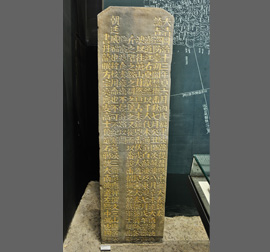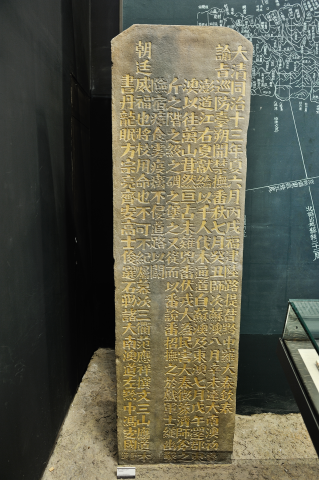:::

Monument for the mountain opening by Luo Da-chun
- Form:Replica
- Category:Cultural relic

Before the end of Tungchih regime in the Qing Dynasty, there were no roads between Kavalan (Yilan) and Qilai (Hualien), and the sea was the only means of transport. In 1874, after the Japanese Government dispatched troops to southern Taiwan (an event that became known as the Mudan Incident), the Qing government sent Shen Bao-Zhen to oversee the situation and settle the conflict, who then declared the “Develop the Mountains and Appease the Indigenous Population” policy. Meanwhile, Luo Da-chun was summoned by Shen Bao-Zhen to northern Taiwan in order to take over defensive efforts from Xia Xian-Guan, the Superintendent of Military Affairs in Taiwan. He was also in charge of implementing the “Develop the Mountains and Appease the Indigenous Population” policy.
Luo Da-chun led the government army, laborers and recruited soldiers to continue land reclamation efforts. Supported by an increased number of troops and the construction of fortresses along the way, he personally led the soldiers to Xincheng in 1875 via Dananao, Dazhuoshui and Daqingshui, and thereby officially opened the northern road from Suao to Hualien Harbor. Subsequently, the road was further extended to Wuquancheng and Shuiwei. The arduous process is documented on the stele, which states “axes, hatchets, stairs, steps, forts and fortresses”.








